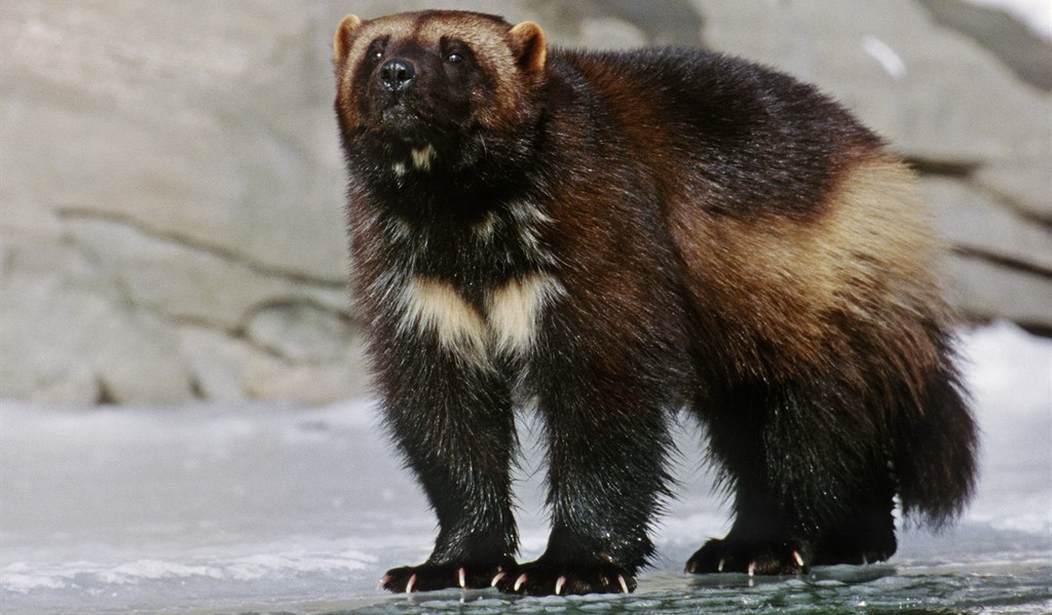Presumably, Colorado has already solved every other problem facing the state because now, the state's Parks and Wildlife agency is considering the reintroduction of wolverines into their stretch of the Rocky Mountains.
No, not those wolverines. The real ones.
Wolverines — also called “mountain devils” and “skunk bears” — could be the next large mammal reintroduced in Colorado after wildlife officials implement the voter-mandated reintroduction of wolves by the end of the year.
How and when wolverines could be introduced here hinges on an upcoming decision from the U.S. Fish and Wildlife Service on whether the species should be protected under the Endangered Species Act. A decision is expected in the next few months and, depending on the way that goes, efforts to begin bringing in wolverines could begin again. Plans to reintroduce the species in Colorado have existed for more than a decade, but uncertainty around the federal listing decision kept wildlife officials from pursuing the effort.
“It was bouncing back and forth, lots of uncertainty there,” said Eric Odell, species conservation program manager at Colorado Parks and Wildlife. “Because of all that uncertainty, we put it all on the back burner.”
The wolf issue, by the way, is a textbook example of why wildlife management issues shouldn't be on the ballot. It's a safe bet that most of the folks who voted to reintroduce wolves into Colorado, into the environment, aren't the same people who live out in the environment (when I was a kid, we called it "the country"), and if the wolverine issue is likewise put on the ballot, it's a safe bet that this will be repeated.
There's a problem, as anyone who is schooled in field zoology knows — or, as stated above, anyone who lives out in "the environment" also knows: That habitat has changed quite a bit since the wolverine roamed the Colorado Rockies in numbers. The wolverine is a wilderness creature, one that requires a large range, and unlike some animals — coyotes and white-tailed deer, for example — they don't do well near human habitations. And human habitations have taken over large swathes of the Colorado Rockies. This isn't 1860; it's 2023, and other than a few good-sized stretches of designated wilderness, there just aren't that many places with enough breathing room for a population of wolverines. And a self-sustaining population, presumably, is what the Colorado Parks and Wildlife people are looking to put in place.
Colorado's Governor has put his political clout behind the idea:
“The governor continues to join so many Coloradans who share his enthusiasm for reintroducing the native wolverine, last spotted in 2009 in our state, to better restore ecological balance in wild Colorado areas,” Gov. Jared Polis’ spokesman, Conor Cahill, said in a statement. “The governor is hopeful that a successful wolverine reintroduction program will begin during his time as governor.”
Here's a question for the governor: Why? What will Colorado gain that will make this expenditure worthwhile? Even assuming a successful reintroduction, which is far from certain, the wolverine is not only a wilderness animal but a very secretive one. Even here in Alaska, where we almost certainly have more wolverines than the contiguous 48 combined, as the 48 have somewhere between 25 to 300 wolverines in total, hard numbers on an elusive animal like this are near-impossible to obtain. But Alaska and Canada have wolverine populations estimated in the thousands, and Canada has plenty of wolverine habitat, as does Alaska. (It's nice to see something in Canada other than super-pigs.)
But watch! A certain shibboleth of the left is about to enter the discussion:
Wolverines create high-altitude dens in the snowy mountains in the winter and raise their kits there to keep them warm and protect them from predators. Wolverine mothers need deep snow that lasts long into the spring months.
That type of snow will become rare in the American West as the climate warms. Wolverines will lose an estimated 30% of their habitat in the lower 48 states in the next 30 years and 60% of their habitat here in the next 70, according to the National Wildlife Federation.
That brings up a somewhat obvious question: Why, then, spend taxpayer dollars to bring wolverines into a Southwestern state where the habitat is marginal when there are healthy populations farther north?
Look, everyone loves animals, and most of us like to see wildlife thrive in appropriate environments, even if we have to take care to keep our pets away from them. But this isn't one of those places, not for the animals in question. Alaska and Canada already have plenty of land — plenty of wilderness — for wolverines to thrive, as they have since the last Ice Age. Colorado does not; if the skunk bears relocate to the state naturally, then fine, but barring that, they should be left alone.















Join the conversation as a VIP Member